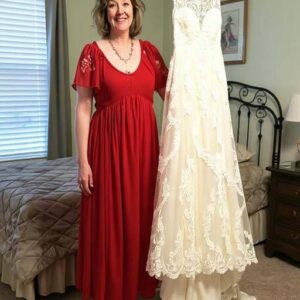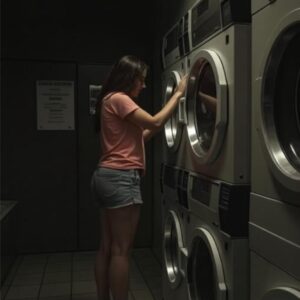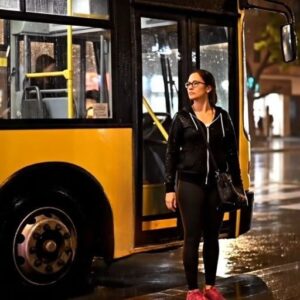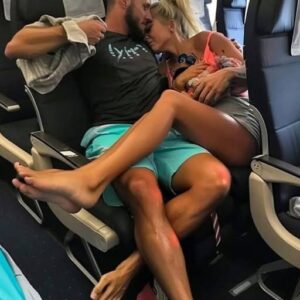I woke up from heart surgery to discover my best friend of 40 years had emptied my garage. Six vintage motorcycles gone. Bikes I’d restored with my own hands over decades. The 1947 Indian Chief my father left me. The 1969 Triumph Bonneville I rode across the country with my wife before cancer took her. All vanished.
Tom had the spare key. The doctors said my triple bypass had a difficult recovery ahead. Tom offered to “check on things” while I was laid up.
Instead, he cleaned me out. Half a million in motorcycles. My life’s passion. Gone.
The police called it a civil matter since I’d given him the key. My son said to let insurance handle it. But those bikes weren’t just machines. They were pieces of my soul.
When I finally made it home, I found one final insult. He’d left a single motorcycle – my worthless 1985 Honda Nighthawk with a cracked engine case. And a note: “Sorry, old man. Time to accept you’re done riding anyway.”
That’s when I made the call. To riders I’d known since Vietnam. Men with gray beards and artificial hips who still answered when a brother needed help.
“Boys,” I said when they gathered in my empty garage. “We’re going hunting.”
—
The six of them arrived within hours, despite it being nearly midnight. Each man in his sixties or seventies, leaning on canes or limping slightly, but with fire in their eyes. Men who understood what those motorcycles meant.
“Tell us everything,” said Charlie, who’d been riding beside me since we returned from Vietnam in ’72. At 76, he was the oldest, with arthritis that twisted his hands like gnarled tree roots. Those same hands could still rebuild a carburetor blindfolded.
I showed them the security footage from my neighbor’s camera. Tom arriving three separate nights with different trucks. The careful way he loaded each motorcycle. The clinical precision of his betrayal.
“Did you know he was having money troubles?” asked Mick, a former bank manager who’d ridden with our group since retiring in ’98.
“No. But it wouldn’t matter. Those bikes weren’t his to solve his problems with.”
Dave, our Vietnam medic who’d later become a surgeon, examined the note Tom had left. “This is personal. The comment about you being done riding… he resented you.”
I nodded slowly. “We rode together since ’83. I never saw it.”
“Where would he take them?” Charlie asked. “Can’t exactly fence rare vintage bikes easily.”
I’d been thinking about this since I first saw the empty garage. “There’s a collector in Oregon. Millionaire tech guy. Tom mentioned him a few months back. Said the man would ‘pay anything’ for my Indian Chief.”
“That’s a start,” said Ray, who had been uncharacteristically quiet. At 68, he was the youngest of us, a former highway patrol officer who retired after a drunk driver shattered his leg. “I still have contacts in law enforcement along the coast. I’ll make some calls.”
I looked around at these men—my brothers in all but blood. They had their own health problems, their own challenges. Most people would look at us and see a bunch of old men with more past than future. But I saw what we really were: riders who lived by a code that didn’t expire with age.
“You all have lives,” I said. “Grandkids. Doctor appointments. You don’t have to—”
“Shut up, Frank,” Charlie interrupted. “When someone steals from one of us, they steal from all of us.”
The others nodded in agreement.
“Besides,” added Mick with a grin that took years off his weathered face, “my doctor says I need more adventure.”
That night, the plan took shape. We weren’t young men who could simply beat the information out of Tom. We needed to be smarter. More patient. More strategic.
When dawn broke, I had six old bikers sleeping in various rooms of my house, and for the first time since finding my empty garage, I felt something besides loss and betrayal. I felt hope. And something else—a familiar burn I hadn’t felt in years. The fire of the hunt.
We spent the first day gathering intelligence. Mick accessed financial records that suggested Tom had indeed been drowning in debt—gambling mostly, hidden from his wife and family. Ray’s law enforcement contacts confirmed a similar collection of vintage motorcycles had been registered recently by a tech executive named Wesley Harmon in Portland.
“That’s six hours up the coast,” Charlie said, studying the map we’d spread across my kitchen table. “Question is, do we go after Tom first, or straight to the bikes?”
“Tom first,” I said firmly. “I want to look him in the eye and hear him say why. Then we go for the bikes.”
Dave nodded. “If we confront Tom, we risk tipping off the buyer that something’s wrong with his new acquisitions.”
“So we don’t confront him directly,” said Ray, the tactical mind of our group. “We follow him. Watch him. See if he leads us to any of the bikes he might still have, or evidence we can use.”
“What about your recovery?” Dave asked me, concern evident in his voice. “You had major surgery three weeks ago.”
I unbuttoned my shirt to reveal the long scar down my chest. “This? This is nothing compared to what Tom did. I’d rather die on the road seeking justice than sit here feeling sorry for myself.”
Charlie clapped me on the shoulder. “Nobody’s dying. But we are getting your bikes back.”
The next morning, we set out. Not on motorcycles—my remaining Nighthawk was useless, and the others had trailered their bikes from distant cities. Instead, we took Charlie’s ancient Suburban and Ray’s pickup truck. Our first destination: Tom’s house, thirty miles away in Fairfield.
We set up a stakeout rotation, two men at a time watching Tom’s house from different vantage points. The others researched the Oregon buyer, mapped routes, and prepared for what might come next.
On the second day, we got our first break. Tom received a visitor—a thin man with a nervous demeanor who arrived in an unmarked van. They spoke briefly in the driveway, then Tom led him to the garage. Twenty minutes later, the man left with something wrapped in moving blankets strapped in the back of his van.
“Parts,” said Charlie, who’d been watching through binoculars. “Has to be. He’s breaking down the bikes he hasn’t sold yet.”
My heart sank. If Tom was parting out the motorcycles, our window was closing fast. Once those pieces scattered to buyers across the country, I’d never get them back.
“We follow the van,” Ray decided. “It might lead us to where he’s storing the rest.”
Charlie and I tailed the van while the others maintained watch on Tom’s house. The van headed to an industrial area and stopped at a nondescript storage facility. Through a chain-link fence, we watched the man unload his package and enter unit 147.
“Bingo,” whispered Charlie.
That night, our group reconvened at my house to plan our next move. Breaking into the storage unit was out of the question—none of us wanted to risk prison at our age. But we needed to confirm what was inside that unit.
“I might have a solution,” said Mick, who’d been making calls all afternoon. “The storage facility manager is a rider. Owns a Harley Road King. I reached out to some contacts in the local chapter, and it turns out he’s sympathetic to our situation.”
The next day, Mick and I met with the manager, a bearded man in his fifties named Carl.
“I can’t give you access,” Carl explained, “but I can tell you there are motorcycle parts in unit 147. The renter claimed they were for a restoration business.”
“Whose name is the unit in?” I asked.
“Not your friend’s,” Carl said. “It’s rented to something called ‘Vintage Cycle Solutions.’”
A quick search revealed that Vintage Cycle Solutions had been incorporated just three weeks earlier—right around the time Tom had stolen my collection. The listed owner was someone named Janet Mercer.
“His sister-in-law,” I said, recognizing the name. “He’s keeping it off his books.”
With this confirmation, we refined our plan. Ray would continue monitoring Tom’s movements. Dave and another rider would drive to Portland to scout Wesley Harmon’s property, where we suspected my most valuable bikes had already been delivered. The rest of us would focus on the storage unit, hoping to catch Tom or his accomplice in the act.
After three more days of surveillance, we had a pattern. The thin man visited the storage unit every evening around 7 PM, presumably to work on breaking down more bikes. Tom himself never went near the place—a calculated move to maintain deniability.
“Time to confront the accomplice,” I decided. “He’s the weak link.”
That evening, Charlie, Mick, and I waited in the storage facility parking lot. When the thin man arrived, we approached him as he was unlocking the unit.
“Evening,” I said casually. “Working late on those stolen motorcycles?”
The man froze, then turned slowly. “I don’t know what you’re talking about.”
I stepped closer. “Those are my bikes. Stolen while I was in hospital having heart surgery.”
His eyes darted between the three of us—gray-haired men who might look harmless to some, but there must have been something in our expressions that concerned him.
“Look, I just break them down and ship the parts. I didn’t steal anything,” he stammered.
“Who hired you?” Charlie demanded.
“Tom Mercer. Said they were from an estate sale. I swear I didn’t know they were stolen.”
I believed him. He was just a mechanic making extra cash, not the architect of the theft.
“Open the unit,” I said.
Inside, my worst fears were confirmed. My 1952 Vincent Black Shadow was half-disassembled. Parts from my 1956 BSA Gold Star were sorted into labeled boxes ready for shipping. The sight made me physically ill.
I turned to the mechanic. “Here’s what happens now. You’re going to help us recover these parts and restore these bikes, or we call the police and report you as an accomplice to grand theft.”
His face paled. “I can’t… Tom will—”
“Tom will what?” Mick interrupted. “You’re the one with stolen property in your possession. Not Tom.”
The mechanic—who eventually told us his name was Kevin—quickly realized his position. By the end of the evening, he had agreed to help us recover and reassemble what remained of the motorcycles, and to provide a signed statement about Tom’s involvement.
Meanwhile, Dave called from Portland with news. He’d located two of my bikes—the Indian Chief and the Triumph Bonneville—in Wesley Harmon’s collection. Through a gardener working on the property, Dave learned that Harmon was planning a private showing for fellow collectors that weekend.
“We need to move fast,” Dave said. “Once these bikes are seen publicly in his collection, he’ll have multiple witnesses that he possessed them openly, complicating our ability to reclaim them.”
With Kevin’s cooperation secured, we shifted our focus to Portland. The full group reassembled, and we developed what Charlie jokingly called “Operation Gray Ghost”—our plan to reclaim the motorcycles from Wesley Harmon.
Using contacts from our combined decades in motorcycle clubs, business, and law enforcement, we learned that Harmon was hosting his collector event Saturday evening. Security would be present but minimal—he trusted in his remote location and electronic gates to protect his collection.
What he didn’t count on was a team of determined older riders with nothing to lose.
Ray mapped multiple access routes to the property. Dave, with his medical background, ensured we all had necessary medications and emergency contact information—we might be on a mission, but we weren’t foolish about our health limitations.
Friday morning, we hit the road to Portland. Six pickup trucks, each driven by one of my brothers. I rode with Charlie, staring out the window at the coastal highway, remembering all the times I’d traveled this route on my motorcycles. The irony wasn’t lost on me—here I was, chasing my own bikes, unable to ride.
“We’ll get them back,” Charlie said, noticing my silence. “All of them.”
“It’s not just the bikes,” I admitted. “It’s Tom. Forty years of friendship. Rides across every state. He held my hand at my wife’s funeral. How does someone turn like that?”
Charlie’s weathered hands gripped the steering wheel tighter. “Some men reveal their true character only when tested. Others when tempted. Tom failed both tests.”
We arrived in Portland by nightfall and checked into a motel near Harmon’s estate. That night, we finalized our approach. The plan was simple in concept, complicated in execution. We would attend Harmon’s event undercover—Ray had secured invitations through a legitimate collector friend—while the others positioned themselves strategically around the property.
“Remember,” I told the group during our final briefing, “this isn’t about revenge. It’s about justice. We get proof the bikes are mine, confront Harmon privately, and give him the chance to do the right thing before we involve authorities.”
Dave looked concerned. “And if he refuses?”
“Then we move to plan B,” said Ray with a glint in his eye that reminded me why he’d been such an effective highway patrolman.
Saturday evening arrived. Charlie and I dressed in blazers that concealed our rider backgrounds. Ray—the most presentable of us with his silver hair and dignified bearing—would do most of the talking. The others took their positions around the property, communications established through old-school walkie-talkies rather than cell phones that might leave digital traces.
As we approached Harmon’s estate in Ray’s truck, I felt a familiar tension—the same I’d experienced before major combat operations in Vietnam. The stakes were different now, but the brotherhood remained the same. Men who trusted each other with their lives, committed to a shared purpose.
Harmon’s home was a modernist showcase of glass and steel perched on a hillside overlooking Portland. Luxury cars lined the circular driveway, and well-dressed guests mingled on a large patio. To our relief, the security presence was exactly as expected—two guards at the entrance, checking invitations and providing valet service.
“Ready?” Ray asked as we pulled up to the checkpoint.
I nodded, touching the inside pocket where I kept original photos of myself with the motorcycles, along with documentation proving ownership.
The security guard checked our invitations and waved us through. We were in.
Wesley Harmon greeted guests near the entrance to an underground garage that had been converted into a showcase for his collection. He was younger than I expected—mid-forties, with the confident demeanor of a man accustomed to getting what he wanted.
“Welcome,” he said mechanically as we approached, clearly not recognizing us as fellow collectors of note.
“Beautiful home,” Ray commented smoothly. “We’re particularly interested in your newest acquisitions. I understand you recently obtained a ’47 Indian Chief?”
Harmon’s expression brightened. “Indeed! A magnificent specimen. Previously owned by a collector who sadly passed away. It’s the centerpiece of tonight’s showcase.”
My blood boiled at the lie, but I maintained my composure. “I’d love to see it,” I said, forcing enthusiasm into my voice. “I owned one quite similar years ago.”
Harmon led us into the garage, now transformed into a museum-quality display space. And there they were—my Indian Chief and Triumph Bonneville, positioned prominently among other rare motorcycles. They gleamed under carefully positioned spotlights, looking somehow both familiar and foreign in this sterile environment.
“Magnificent, aren’t they?” Harmon said proudly. “The Indian still has all matching numbers, and the Bonneville has less than 15,000 original miles.”
“I know,” I said quietly.
Harmon turned to me, confused. “Excuse me?”
I pulled the photographs from my pocket and handed them to him. “That’s me, with these exact motorcycles. For the past forty years. This Indian belonged to my father, who bought it new in 1947. The Bonneville was the last trip I took with my wife before she died of cancer.”
Harmon’s face flushed as he looked at the photos, then at me, then back at the motorcycles. “I don’t understand. I purchased these legally.”
“From Tom Mercer,” Ray supplied. “Who stole them from my friend here while he was recovering from heart surgery.”
By now, several guests had noticed our conversation and were drifting closer, curious about the confrontation developing in their midst.
Harmon lowered his voice. “This is hardly the venue for such accusations. If you have concerns about provenance, have your lawyer contact mine.”
“No lawyers necessary,” I said, matching his quiet tone. “Just the truth. These are my motorcycles. Stolen from me. I can prove it beyond any doubt.”
I handed him more documentation—registration papers, insurance records, maintenance logs with serial numbers. “The police are already investigating. Tom Mercer’s accomplice has provided a full statement.”
This last part was stretching the truth—we had Kevin’s cooperation but hadn’t yet gone to the police. Sometimes, a strategic bluff was necessary.
Harmon’s confident demeanor wavered as he scanned the documents. I could almost see the calculations running behind his eyes—the public embarrassment of having showcased stolen property, the legal complications, the potential damage to his reputation among fellow collectors.
“Step into my office,” he said finally, gesturing toward a door at the back of the garage.
Once inside the privacy of his office, with Ray beside me, I laid out the situation plainly. “I don’t believe you knew these were stolen. Tom Mercer is a convincing liar. But now you do know, and you have a choice.”
Harmon paced behind his desk. “What choice, exactly?”
“Return my motorcycles tonight. I’ll take them and leave quietly. No police involvement, no public story about how Wesley Harmon’s prized acquisitions were stolen from an old man after heart surgery.”
“Or?” he challenged.
Ray stepped forward. “Or tomorrow morning, the local news receives an interesting story about tonight’s event, complete with documentation proving the provenance of those bikes. I imagine the collecting community has a certain code of ethics about purchasing stolen items.”
Harmon sat heavily in his chair. “I paid six figures for those motorcycles.”
“Your quarrel is with Tom Mercer,” I said. “Not me.”
After several tense minutes of negotiation, Harmon agreed to our terms. He would announce to his guests that the motorcycles had been “temporarily removed from display due to documentation concerns.” Once the event concluded, we could reclaim them.
“What about my money?” Harmon asked.
“Again, take that up with Tom Mercer,” Ray advised. “We’d be happy to provide statements to assist in your case against him.”
As we left Harmon’s office, I felt a weight lifting from my chest that had nothing to do with my recent surgery. Two of my precious bikes would soon be back where they belonged. The others, we would reassemble from the parts Kevin had helped us secure.
The rest of the evening passed in a surreal blur. We mingled with guests, accepting champagne we didn’t drink, discussing motorcycles with collectors who had no idea of the drama unfolding. Through discreet updates via our walkie-talkies, I learned that our teammates outside had secured a trailer and were positioned for a quick exit once we had the bikes.
Shortly before midnight, the last guests departed. True to his word, Harmon led us back to the garage where my Indian Chief and Triumph Bonneville waited.
“I want a signed statement that I returned these voluntarily,” he insisted.
“You’ll have it,” I promised. “Along with my sincere belief that you were an unwitting participant in Tom’s scheme.”
As Charlie and the others backed the trailer to the garage entrance, I ran my hands over the familiar curves of my motorcycles. They were unchanged, perfectly maintained—at least Tom had ensured that much before selling them.
By 2 AM, we were on the highway heading south, my two most precious bikes secured in Charlie’s trailer. The others followed in a convoy, a brigade of aging riders completing one last important mission.
“Where to now?” Charlie asked as Portland’s lights receded in our rearview mirror.
“Home,” I said, feeling genuine peace for the first time in weeks. “Then to see Tom.”
We arrived back in California the following afternoon. After carefully unloading the motorcycles into my garage beside the parts Kevin had helped us recover, I called Tom.
“We need to talk,” I said when he answered. “Come to my house. Alone.”
An hour later, Tom’s truck pulled into my driveway. I waited in the garage, surrounded by the physical manifestation of our four-decade friendship—motorcycles we had ridden together countless times.
When he walked in and saw the Indian Chief and Bonneville, his face went pale.
“How did you—”
“Friends,” I interrupted. “Real ones. The kind who don’t steal from each other when times get tough.”
Tom’s shoulders slumped as the facade crumbled. “I’m sorry, Frank. I got in deep with gambling debts. They were threatening my family. I knew you had the surgery coming up… I thought I’d sell the bikes, pay off the debt, then buy them back before you even noticed.”
“With what money?” I asked. “You were in for hundreds of thousands.”
He had no answer.
“Forty years, Tom. If you’d asked for help, I would have given you every cent I had. But you chose to steal instead.”
Tom couldn’t meet my eyes. “What happens now? Police?”
I considered this carefully. In the days since discovering the theft, I’d imagined this moment differently—sometimes with rage, sometimes with cold legal justice. But standing here now, I felt something unexpected: pity.
“No police,” I decided. “But our friendship is over. And you’re going to make this right.”
“How?” he asked.
“You’re going to work with Kevin to restore every bike you took apart. Every weekend, every evening, until they’re whole again. You’ll sign a confession that Wesley Harmon can use to get his money back. And you’ll get help for your gambling.”
Tom looked up, disbelief evident. “Why would you do that?”
“I’m not doing it for you,” I said truthfully. “I’m doing it for me. For the man I want to be. The man your actions couldn’t change.”
The restoration process took months. True to his word, Tom appeared every evening after work and every weekend, gradually rebuilding what he had torn apart. We rarely spoke beyond necessary communication about parts and processes. The easy friendship we once shared was gone, replaced by a silent partnership of restitution.
By the time the last motorcycle was restored—a 1958 Ariel Square Four that had been the most completely disassembled—nearly a year had passed since my heart surgery. In that time, I had regained my strength, riding short distances at first, then gradually longer journeys with my old friends who had come to my rescue.
On the day Tom completed the final reassembly, he wiped his hands on a shop rag and faced me.
“It’s done,” he said simply.
I nodded, inspecting the Ariel. It was perfect—perhaps even better than before.
“Thank you,” I said.
Tom gestured to the collection, now complete again. “What will you do with them now?”
I smiled. “Ride them. For as many years as I have left. Then pass them on to people who understand what they really mean.”
After Tom left that day, I called Charlie and the others. They arrived within hours, as they always did when needed.
“To brotherhood,” I toasted, raising a glass in my garage surrounded by the motorcycles that had brought us together in a different way than ever before.
“To brotherhood,” they echoed.
The next morning, we rode out together—six old men on vintage motorcycles, defying time and expectations. The wind felt the same as it had decades ago when we were young men with limitless futures. The road unfolded before us, promising adventures still to come.
Some might look at us and see the end of something—aging riders on old machines. But we knew better. We were living proof that what matters most isn’t youth or even health, but the connections we forge along the journey. The people who show up when you need them most.
And sometimes, the most valuable things we own aren’t things at all.




